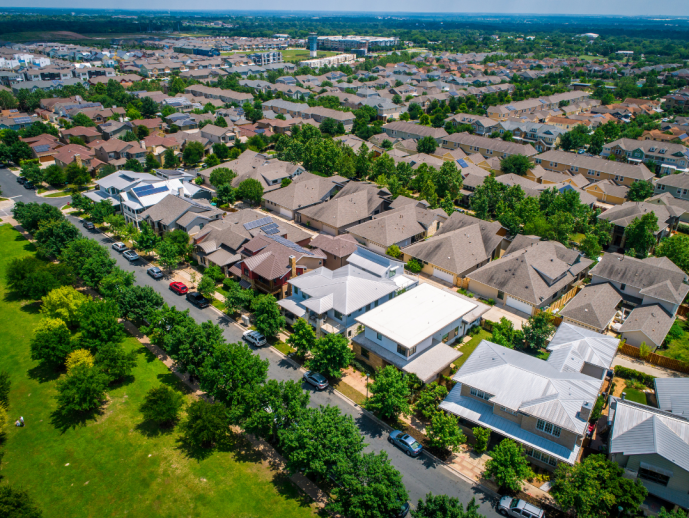Categories more
- Adventures (17)
- Arts / Collectables (15)
- Automotive (37)
- Aviation (11)
- Bath, Body, & Health (77)
- Children (6)
- Cigars / Spirits (32)
- Cuisine (16)
- Design/Architecture (22)
- Electronics (13)
- Entertainment (4)
- Event Planning (5)
- Fashion (46)
- Finance (9)
- Gifts / Misc (6)
- Home Decor (45)
- Jewelry (41)
- Pets (3)
- Philanthropy (1)
- Real Estate (16)
- Services (23)
- Sports / Golf (14)
- Vacation / Travel (60)
- Watches / Pens (15)
- Wines / Vines (24)
- Yachting / Boating (17)
North American Real Estate Market Predictions For 2026
Published
09/30/2025The North American housing market is heading into 2026 with a mix of normalization and new pressure points. After years of rapid rate hikes, tight inventory, and uneven regional performance, the next cycle looks steadier yet still competitive. Buyers, sellers, and investors who prepare early and act with discipline will find opportunity without overreaching. Below is a clear-eyed forecast and a practical guide you can apply right away.
1) Big picture outlook for 2026
Expect slow but positive momentum. Inflation is projected to trend closer to long-run targets, which supports a gradual easing bias from central banks. Mortgage rates may settle into a mid to high five percent band in the United States and a mid four to low five percent band in Canada if inflation cooperates. That range is high compared with the 2020 to 2021 period, yet manageable for qualified borrowers.
Employment remains a key support. While hiring cooled in several sectors in 2025, unemployment rates are still low by historical standards. Wage growth, though moderating, continues to underpin household formation and long-run demand for shelter.
Inventory is likely to improve, but not flood the market. More move-up sellers will list as the rate lock-in weakens, and builders have slowly increased completions. Even so, structural supply gaps in many metros will persist, which keeps a floor under prices.
The risk list for 2026 includes sticky inflation, policy surprises, and local supply shocks. Any of these can produce short bursts of volatility. The base case is a more balanced market with mild price growth, higher transaction counts than 2024 to 2025 lows, and tighter spreads between list and sale prices.
2) Prices and inventory, region by region
United States
• Sun Belt metros that saw the sharpest pandemic-era appreciation should run cooler but positive. Think mid single-digit annual price growth with noticeable neighborhood-level variation.
• Midwest and interior markets that remained affordable may outperform on sales volume as remote flexible work stabilizes and buyers seek value.
• Coastal tech hubs will stay bifurcated. Prime, well-located listings that are turnkey continue to sell quickly, while dated or poorly located properties need price realism.
Canada
• Greater Toronto and Greater Vancouver should see steadier sales and modest price gains as immigration supports demand and as builders deliver more units.
• Prairie provinces may post stronger resale growth where energy, agriculture, and logistics create jobs.
• Smaller Ontario and Atlantic markets that ran red hot in 2021 to 2022 will move in step with local employment and commute patterns.
Inventory is the swing factor. Expect months of supply to climb toward healthier ranges, especially in entry and mid-price segments. Luxury remains a story of quality and uniqueness, not quantity.
3) Mortgages, payments, and what to do about financing
Rate cuts, if delivered, are more likely to be incremental than dramatic. Affordability, therefore, improves through a mix of small rate relief, slower home price growth, and rising incomes. Borrowers should model scenarios with a conservative stress buffer rather than anchoring on best-case rate paths.
Fixed or variable
• Fixed terms make budgeting easier and protect against upside shocks.
• Variables can win if cuts arrive sooner or larger than expected, yet they demand a stronger tolerance for payment changes.
Practical steps
- Get fully underwritten before you shop, not just pre-qualified.
- Ask lenders for a rate hold and a float down option if available.
- Compare the total cost of borrowing, not only the headline rate. Include points, insurance, prepayment terms, and portability.
- Align amortization with your real holding period. Shorter terms reduce interest cost but raise payments.
- Consider payment smoothing tools such as accelerated biweekly schedules and lump sum prepayments tied to bonus cycles.
Include professional guidance early. In competitive submarkets, work with a local real estate agent with market knowledge who tracks micro trends on absorption, concessions, and appraisal gaps. Pair that with a responsive mortgage broker or bank team that can reissue approvals if your price range shifts.
4) New construction, rentals, and policy signals
New construction stays busy in areas with strong job growth and favorable permitting. Builders remain cost-sensitive, so incentives will continue, including closing credits, buydowns, and upgrade packages. Watch local pipeline data. If completions spike in a narrow submarket, pricing can soften for a quarter or two, especially for look-alike product.
Rental markets are set to rebalance. Deliveries from 2024 to 2025 should reach peak lease-up in 2026, which eases rent growth in supply-heavy corridors. That said, household formation keeps long-run rental demand resilient. Expect concessions to be common during lease-up season, then fade.
Policy matters. Zoning reforms, density bonuses near transit, and expedited approvals can expand supply. On the demand side, any changes to mortgage insurance rules, first-time buyer programs, or investor lending caps will create short windows of opportunity. Track your city council and provincial or state housing files, since local changes often move faster than national ones.
5) A practical playbook for buyers in 2026
- Build a five-number budget
Target price, down payment, monthly max, repair reserve, and six six-month emergency fund. Write them down and stick to them. - Secure financing with flexibility
Choose a term that fits your career visibility and possible life changes. Ask for portable mortgages or assumable clauses if you expect to relocate. - Shop the market in layers
Start with broad geography, then filter by commute, schools, or lifestyle. Finally, rank micro neighborhoods by value per square foot and time to downtown or major job nodes measured in minutes, not miles. - Price the house, not the market
Use recent comparable sales within one kilometer for low-density neighborhoods or within the same building for condos. Adjust for size, condition, exposure, parking, and outdoor space. - Make resilient offers
Clean terms, realistic deposits, and inspection strategies that protect you without scaring the seller. If competition is light, request a seller credit for closing costs or a rate buydown rather than asking for a blunt price cut. - Plan for the first year
Budget for utilities, small renovations, and seasonal maintenance. Build a vendor list that includes inspectors, HVAC, roofing, and landscaping.
6) A practical playbook for sellers in 2026
- Price to the market you have
Use the last 60 to 90 days of direct comparables and watch active inventory. Overpricing by even two to three percent increases days on market and lowers your eventual net. - Stage and repair with ROI discipline
Fresh paint, lighting, hardware, deep cleaning, and landscaping deliver outsized returns. Save big remodels for cases where comps show a clear premium. - Optimize days on market optics
Launch on a Thursday or Friday, host showings over the weekend, and review offers early in the following week. - Give buyers financing wins
Offer a concession that the buyer can use for a rate buydown or closing costs. It often preserves your headline price. - Market the lifestyle
High-quality photos, detailed floor plans, a video walkthrough, and a neighborhood guide that features commute times, parks, and amenities. - Prepare for appraisal
Provide your agent with a package of upgrades, permits, and comparables so the appraiser has everything needed to support the contract price.
7) Guidance for investors
Cap rates should stabilize as rates level off, though spreads vary by city and asset type. Underwrite with conservative rent growth, realistic operating expenses, and a hold period that survives a slower sale market. Value-add plays remain viable in properties where energy upgrades and smart renovations reduce operating costs and shorten vacancy.
Risk management
• Lock financing before commencing heavy renovations.
• Carry contingency reserves of at least ten percent of project cost.
• Use stress-tested exit scenarios that include a flat or slightly negative price path.
Where to hunt
• Secondary cities with strong universities or medical anchors.
• Infill neighborhoods that gain from transit improvements.
• Small multifamily and missing middle housing where local policy encourages gentle density.
Bottom line
The 2026 market rewards preparation, speed, and realism. Prices should rise modestly in many regions, inventory will look healthier, and financing will be more predictable than the past few years. Success will come from local data, disciplined budgeting, and offers that solve the other side’s problem without creating new ones for you.

















